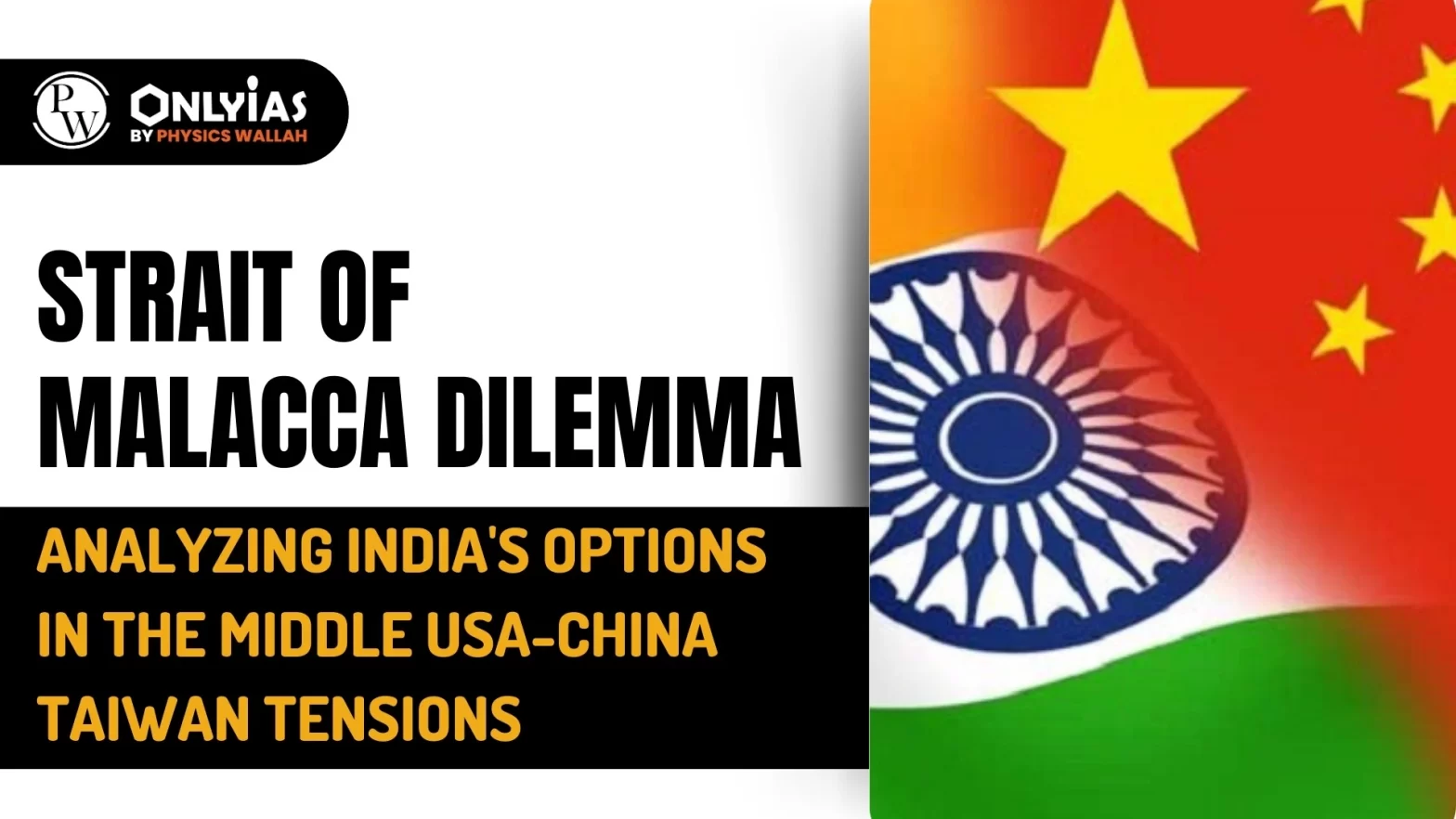Context:
- This article is based on an Editorial “Taiwan, a Malacca blockade and India’s options” which was published in The Hindu. Nowadays, there is the oft-posed question whether India would take action in the Strait of Malacca or the Andaman Sea in the event of a conflict between the United States and China over Taiwan.
- It is the fact that commercial shipping as well as naval vessels of any country have a right to freedom of navigation on the high seas and a naval blockade against it is not feasible.
| Relevancy for Prelims: Location of Sunda Strait, Strait of Malacca.
Relevancy for Mains: India’s constraints on naval blockade in Sunda Strait for China and Strait of Malacca |
Constraints and Complexities in India’s Options Concerning the Strait of Malacca
- Distant blockades face challenges under international law.
- Trade Passing through the Strait of Malacca is not crucial for China but also for Japan, South Korea.
- The sovereignty of other states such as Indonesia, Malaysia, Thailand and Singapore add complexity to any naval blockade.
- Commercial shipping is extremely complex to identify in terms of the sovereignty of the vessel, flag, registration, ownership, etc. of cargo.
- Also these are often multinational in nature and can also be changed as convenient through transshipment at any port in Southeast Asia.
- Even if the Strait of Malacca were “choked”, shipping can take a detour either through the Sunda or the Lombok Straits to reach China.
- China’s huge onshore and floating Strategic Petroleum Reserves (SPR) can help during disruptions, especially with growing overland energy supplies from Russia and Central Asia.
Naval Blockade in Strait of Malacca: Diplomatic Implications and Regional Challenges
- A naval blockade or unilateral action against an adversary navy could be seen as a declaration of war.
- China would use its permanent seat in the United Nations Security Council and regional influence to good effect to hinder any such effort.
Naval Blockades: Historical Lessons and Contemporary Risks
- Historical Precedents: First and Second World Wars saw naval blockades and sanctions contributing to conflicts.
- The British blockade of Germany in WWI led to deadly retaliation with U-boats.
- The US embargo on Japan’s energy supplies in WWII played a role in the attack on Pearl Harbor.
- Modern Parallels: Ongoing tensions between Iran and the US in the Strait of Hormuz highlight the risks.
- Whenever Iran has attempted to disrupt the passage of internationally flagged oil tankers, the U.S. responds by sending its naval and air assets in the region to confront the Iranian vessels.
Conclusion:
India has traditionally faced China’s military threats on its borders. The evolving U.S.-India partnership, spanning economics, technology, and the military, is expected to strengthen. The U.S. increasingly sees India as a regional stabilizer in the Indo-Pacific. A robust India, with a strong economy, nuclear deterrence capability, and a credible military, contributes to regional stability and multi-polarity.
![]() 9 Nov 2023
9 Nov 2023

